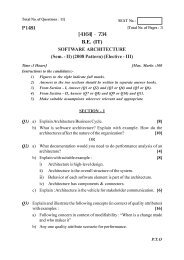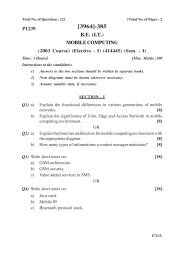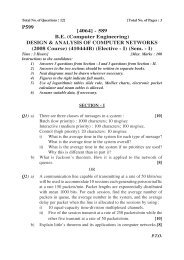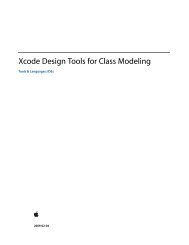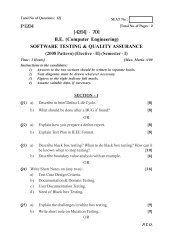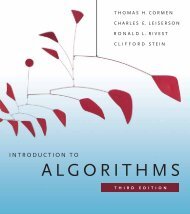Cloud Computing and SOA Convergence in Your Enterprise: A Step ...
Cloud Computing and SOA Convergence in Your Enterprise: A Step ...
Cloud Computing and SOA Convergence in Your Enterprise: A Step ...
You also want an ePaper? Increase the reach of your titles
YUMPU automatically turns print PDFs into web optimized ePapers that Google loves.
102 Chapter 5 Work<strong>in</strong>g from <strong>Your</strong> Data to the <strong>Cloud</strong>s<br />
A good data catalog should list all data elements with<strong>in</strong> all systems, mak<strong>in</strong>g<br />
sure to record<br />
Description<br />
Ownership<br />
System<br />
Format<br />
Security parameters<br />
Integrity parameters<br />
Dependencies<br />
Once accomplished, it is possible to create an enterprisewide <strong>and</strong>/or<br />
cloudwide catalog of all data elements that may exist with<strong>in</strong> the enterprise or<br />
on the cloud comput<strong>in</strong>g platforms. The result<strong>in</strong>g catalog becomes the basis<br />
of underst<strong>and</strong><strong>in</strong>g that is needed to create the core <strong>in</strong>formation model—the<br />
foundation of our architecture <strong>and</strong> the basis for figur<strong>in</strong>g out what will exist<br />
<strong>in</strong> the clouds <strong>and</strong> what will not.<br />
For most medium- to large-sized enterprises, the creation of this data<br />
catalog is a massive undertak<strong>in</strong>g. In essence, it dem<strong>and</strong>s the creation of the<br />
Mother of All Data Dictionaries, a complex directory that <strong>in</strong>cludes not only<br />
the traditional data dictionary <strong>in</strong>formation but also all of the <strong>in</strong>formation<br />
that is of <strong>in</strong>terest to a cloud project, such as system <strong>in</strong>formation, security <strong>in</strong>formation,<br />
ownership, connected processes, communications mechanisms,<br />
<strong>and</strong> <strong>in</strong>tegrity issues, along with such traditional metadata as format, name of<br />
attribute, description, <strong>and</strong> so on.<br />
While there is no st<strong>and</strong>ard for catalog<strong>in</strong>g data with<strong>in</strong> cloud comput<strong>in</strong>g<br />
projects, or any architecture project for that matter, the guid<strong>in</strong>g pr<strong>in</strong>ciple<br />
st<strong>and</strong>s clear: the more <strong>in</strong>formation, the better. The catalog will become both<br />
the repository for the new architecture to be built <strong>and</strong> the foundation to discover<br />
new bus<strong>in</strong>ess flows. It will also become a way to automate exist<strong>in</strong>g<br />
bus<strong>in</strong>ess flows with<strong>in</strong> the enterprise.<br />
It is an understatement to suggest that this catalog will be huge. Most<br />
enterprises will f<strong>in</strong>d tens of thous<strong>and</strong>s of data elements to identify <strong>and</strong> catalog<br />
even while reduc<strong>in</strong>g redundancies among some of the data elements. In<br />
addition to be<strong>in</strong>g huge, the data catalog will be a dynamic structure. In a<br />
very real sense, it will never be complete. A person, or persons, will have to<br />
be assigned to ma<strong>in</strong>ta<strong>in</strong> the data catalog over time, assur<strong>in</strong>g that the <strong>in</strong>formation<br />
<strong>in</strong> the catalog rema<strong>in</strong>s correct <strong>and</strong> timely <strong>and</strong> that the architects <strong>and</strong>



